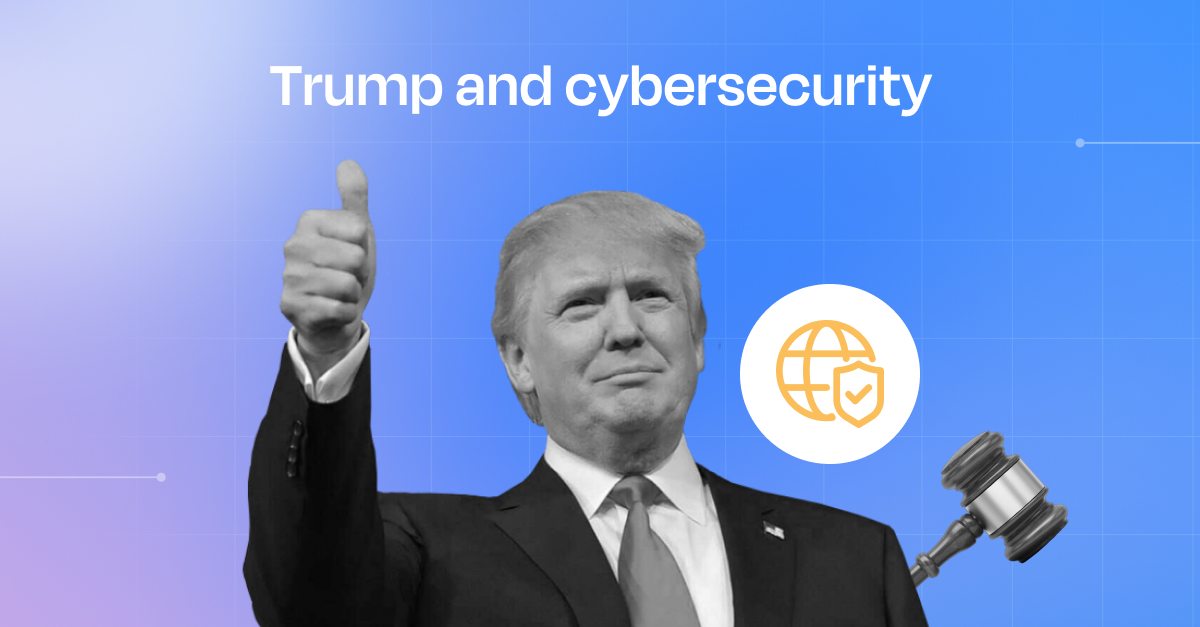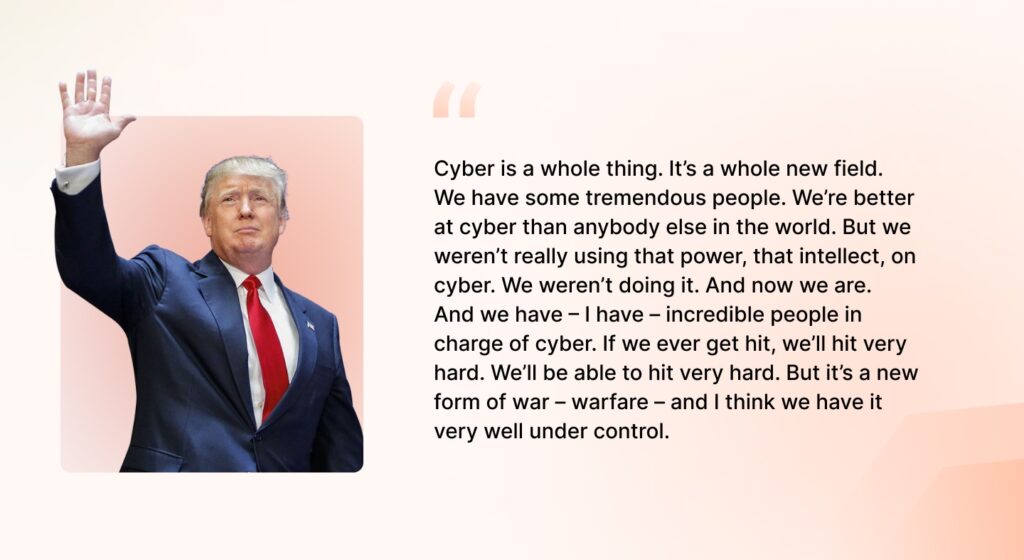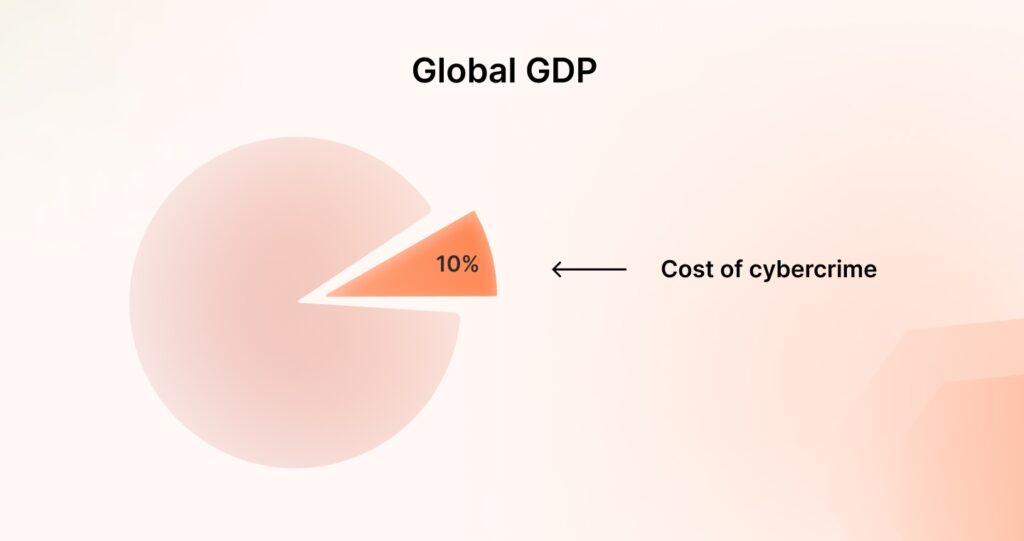Trump’s Approach To Cybersecurity Policies
Heer Chheda
Dec 10, 2024
Cybersecurity, once a secondary concern in presidential discourse, has become a top-tier issue, with the U.S. standing at the crossroads of digital defense, innovation, and geopolitical competition.
In his first term, Trump’s cybersecurity policies were characterized by a strong stance and a more unconventional approach toward international cooperation. But how will these strategies evolve in his second term?
2016 Trump, a callback
When Trump first took office, cybersecurity was becoming an increasingly important issue, with growing concerns about cyber threats from nation-state actors like Russia, China, and Iran. The 2016 election hack, which Russia was linked to, had already raised significant awareness about the vulnerabilities in our digital systems.
Fast forward to 2024, and the U.S. government has a heightened defensive posture. Since his re-election, Trump has reiterated his commitment to protecting the nation’s critical infrastructure from cyber adversaries. The Trump administration has declared cyber resilience a national imperative, pledging to deploy all available resources, from federal agencies to private partnerships, to combat increasingly sophisticated threats.

The role of federal agencies in cyber defense
In fact, cybersecurity has become such a cornerstone of national defense that the Trump administration has pushed to expand the role of agencies like the Cybersecurity and Infrastructure Security Agency (CISA) and the FBI, whose joint efforts are aimed at dismantling the growing network of cybercriminals targeting U.S. businesses and infrastructure.
As outlined in a report from the Office of the National Cyber Director (ONCD), the U.S. has made marked progress in its cyber defense capabilities. However, it is still in the trenches of an ongoing cyber war. These efforts have led to the seizure of assets from ransomware operations and the disruption of international cybercriminal syndicates. However, despite these victories, challenges remain. The complexity and scale of the cyber threats we face today require constant evolution, which may be difficult given the shifting priorities within Trump’s second term.
Cybersecurity’s impact on the private sector
One of the hallmark features of Trump’s cybersecurity strategy in his first term was the decision to take a more aggressive, offensive stance against cyber adversaries. Rather than merely defending against cyberattacks, Trump’s administration embraced the idea of “cyber deterrence” – essentially fighting fire with fire.

In his second term, Trump appears to be doubling down on this approach, with his administration focusing on expanding offensive cyber capabilities. In practice, this means utilizing U.S. Cyber Command to not only defend U.S. assets but also to disrupt adversaries’ operations, potentially even before an attack is launched. While this approach has sparked debate regarding the potential for escalation, there is no doubt that it has shifted the dynamics of international cyber warfare.
Strengthening cyber partnerships with allies
Trump has already signaled his intent to bolster the capabilities of the U.S. military’s cyber units. As tensions with Russia and China remain high, the threat of cyberattacks against U.S. infrastructure is considered a strategic tool in a more giant geopolitical chess game.
Trump’s first term was marked by skepticism towards international agreements, with his administration often adopting a do-it-alone approach. But the nature of cyber threats—by their very definition of borderless—requires a more collaborative approach than Trump’s initial stance on some other policy areas might suggest.
In his second term, Trump has recognized that to combat sophisticated threats effectively, the U.S. must build stronger partnerships with allies. To this end, his administration has been working with NATO, the G7, and other international bodies to establish more explicit norms for state behavior in cyberspace. The U.S. is actively pursuing agreements with European and Indo-Pacific nations to combat cybercrime and to ensure that the digital infrastructure of democracies is protected from malicious actors.
At the same time, Trump’s administration is also moving to address the growing concerns surrounding the use of technology by adversarial states. The U.S. is pushing to limit the use of Chinese tech giant Huawei’s 5G infrastructure in allied nations, citing national security concerns. With a focus on countering Chinese cyber espionage and ensuring that the U.S. maintains an edge in next-gen technologies like artificial intelligence, Trump’s administration prioritizes strengthening global cybersecurity frameworks.
While Trump’s approach to cybersecurity has been largely focused on fortifying the nation’s defenses and confronting adversaries, there is also the delicate matter of the growing influence of Big Tech in shaping the digital world. On one hand, the U.S. is home to some of the largest tech companies, which play an essential role in the nation’s economic engine. On the other hand, these companies, with their vast reach and increasing reliance on cloud technologies, are a prime target for cyber threats.
In his second term, Trump faces the growing pressure of regulating these tech giants while ensuring that innovation is not stifled. His administration has already taken steps to scrutinize tech companies for antitrust violations and their handling of personal data. Trump will likely adopt a regulatory framework that balances the need for increased security with the desire to avoid overregulation, allowing American tech companies to thrive in an increasingly competitive global market.
Yet the question remains: how does the U.S. ensure that these companies’ vast troves of personal and national data are protected from malicious actors without infringing on privacy rights? In Trump’s second term, this balancing act will be increasingly important as data privacy laws evolve, with a heightened focus on securing sensitive information while preserving the ability of tech companies to innovate and grow.
The pressure to regulate big tech
While the Trump administration has made significant headway in tackling cybercrime, one issue remains particularly stubborn—ransomware. As more sectors—from healthcare to government to education—become prime targets for ransomware attacks, the need for a coordinated national response has never been more urgent.
Trump’s approach to ransomware has been multi-pronged: enhance federal law enforcement capabilities, increase public-private sector collaboration, and support international operations to dismantle ransomware networks. However, the ransomware epidemic continues to worsen, with new variants emerging almost daily and cybercriminals shifting their tactics to avoid detection.
Under his second term, the Trump administration is expected to continue ramping up efforts to disrupt ransomware operations. This includes enhancing domestic law enforcement operations and bolstering cooperation with international partners to dismantle these highly profitable criminal networks. However, as evidenced by high-profile attacks like the Colonial Pipeline incident, the evolving nature of ransomware continues to outpace current mitigation efforts.
Challenges ahead; cyber defense in Trump’s second term
Trump’s 2024 term is already shaping up to be a critical period for the future of U.S. cybersecurity. The challenges are immense: from defending against increasingly sophisticated nation-state cyberattacks to addressing the ever-expanding ransomware threat, the landscape is becoming more complex.
As the digital domain becomes more integral to global geopolitics, Trump’s administration must navigate a delicate balance between asserting dominance in cyberspace and fostering international cooperation. The U.S. cannot afford to stand alone in this fight. Trump’s administration will likely see a greater emphasis on building coalitions with like-minded allies to ensure that democracy and security are upheld in the digital realm.
While the future of U.S. cybersecurity under Trump is still being written, one thing is certain: as long as cyber threats continue to grow in scale and sophistication, the need for bold, decisive action will only increase. Whether through expanding offensive capabilities, strengthening international alliances, or addressing the growing threats posed by ransomware and cybercriminals, Trump’s second term promises to define the next chapter in the ongoing battle for cyberspace.


Use Sprinto to centralize security compliance management – so nothing
gets in the way of your moving up and winning big.





















